water plants
WATER PLANTS
Do you want to make cities more beautiful with storm water basins and small sewage treatment plants? Do you not only want to consume land but also create new areas? Are you looking for new ways of financing your plants?
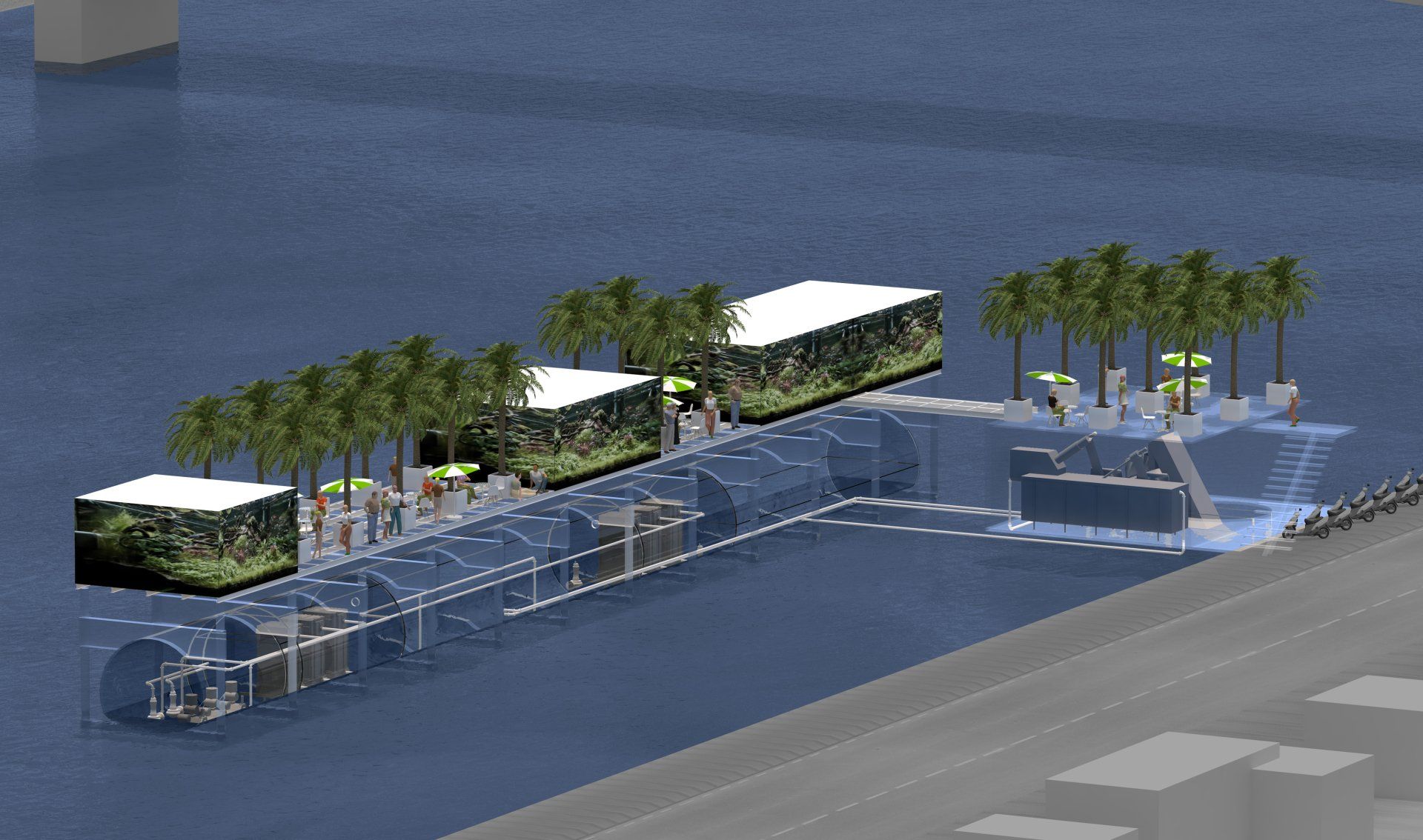
Development of the sewage treatment plant surface with pavilions and plants in pots.
Wind turbines in the North Sea, houses that rise and fall with the sea level and thus defy climate change, floating solar plants, storm water overflow basins installed in the water: phantasies that have become reality. Who would have thought this possible a few years ago?
"Not only is construction simpler and cheaper than on land, but they can also be completed much faster."
WITE is a proven system for the installation of wastewater treatment plants and overflow basins in water bodies. Not only is construction easier and less expensive than on land, but implementation is much faster. The surfaces of the plants - newly created islands - offer the possibility of use, for example as public gardens, as decks for sunbathing, for buildings, as paths for cyclists along the banks - and thus great potential for urban development.
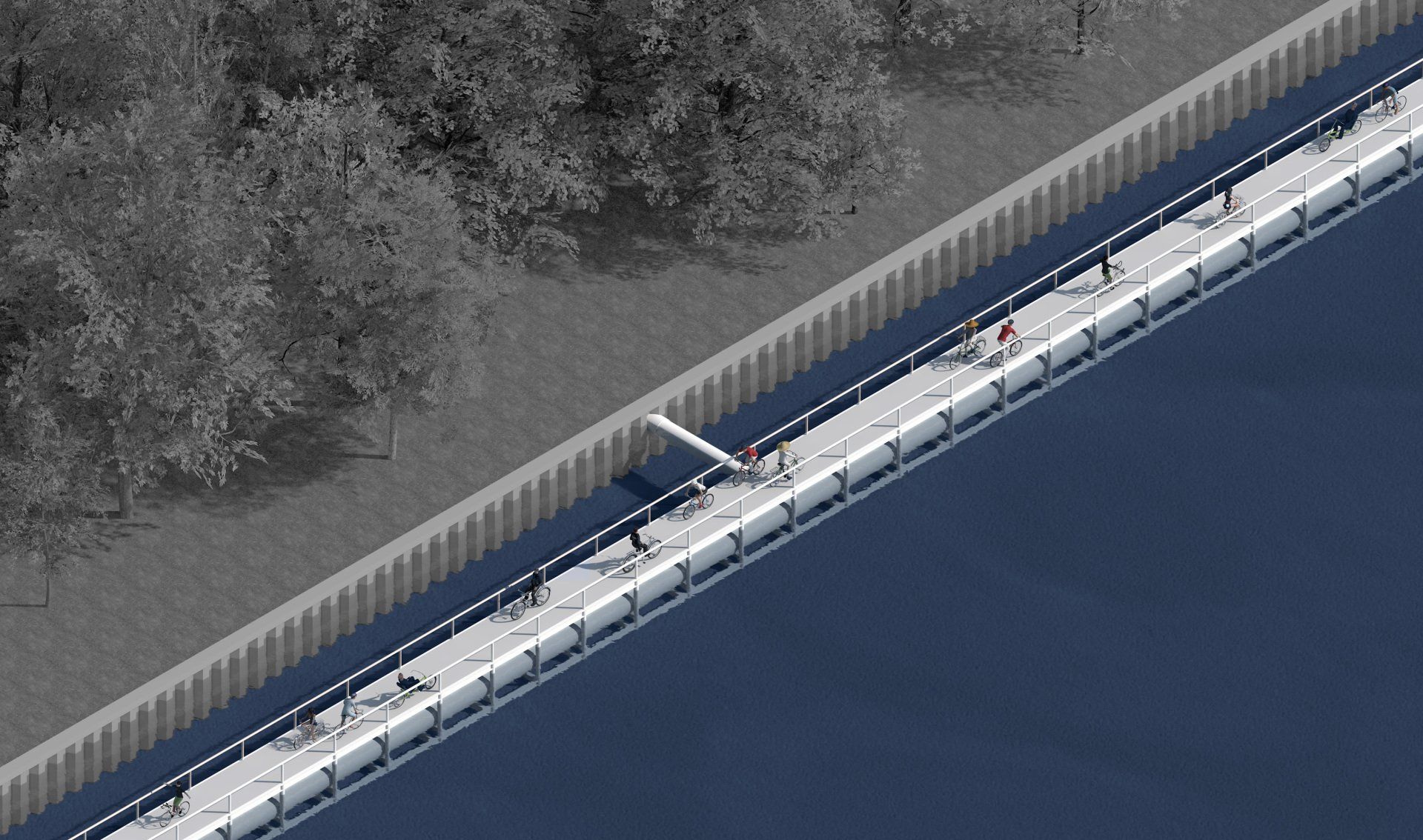
Use of a storm water basin as a cycle path.
"This is water protection, ecology and urban development in a completely new combination. And as a result, smart and sustainable construction."
Even under water, a new life comes into being: The plants are populated by aquatic plants, fish and mussels and bring new life into the waters. This is water protection, ecology and urban development in a completely new combination and as a result: Smart and sustainable constructing.
INSTALLATION
The WITE units are installed exactly at the points where the sewerage system ends and the sewage pipes flow into the water. This eliminates many of the complexities that make the planning and operation of conventional systems so costly and time-consuming:
INSTALLATION
The WITE units are installed exactly at the points where the sewerage system ends and the sewage pipes flow into the water. This eliminates many of the complexities that make the planning and operation of conventional systems so costly and time-consuming:
The difficult and cost-intensive laying of new wastewater pipes leading to the sewage treatment plants across the municipalities (whose construction costs often account for 50% of the total costs) is no longer necessary, as is the construction of pumping stations that transport the wastewater over long distances and whose energy costs consume large sums over decades.
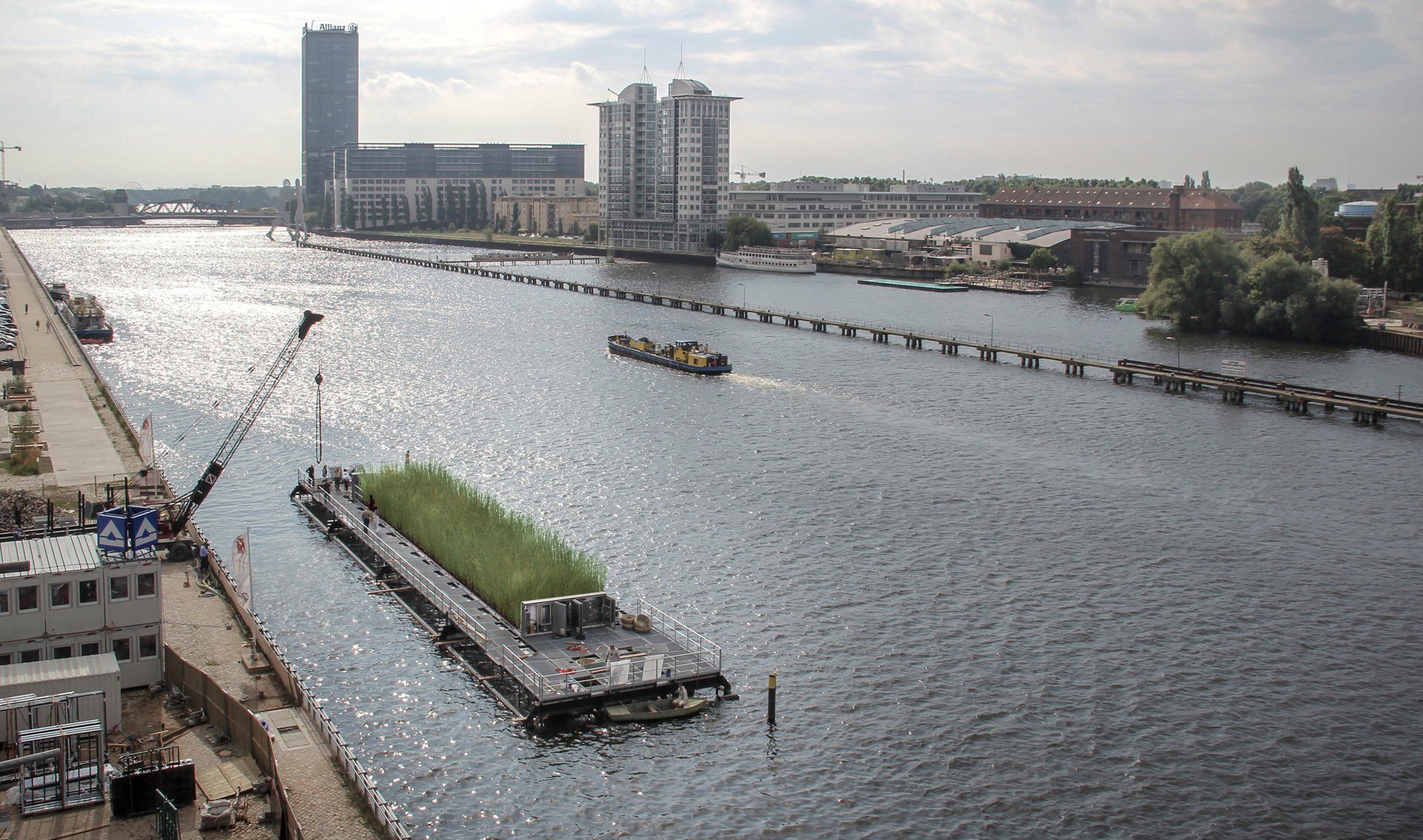
Storm water basins in Berlin in the river Spree.
"What wasn't built doesn't have to be repaired."
Lengthy approval procedures and complex logistical planning are noticeably shortened. Planning, implementation and operation become simpler. The repair costs inevitably associated with long piping systems are also eliminated: What wasn’t built doesn’t have to be repaired..
In contrast to the construction of conventional facilities, massive interventions in the city, road closures, diversions and tree felling are avoided. The excavation of large inner-city excavation pits, the costly lowering of groundwater levels and the associated costly planning and disruption of urban processes are also eliminated.
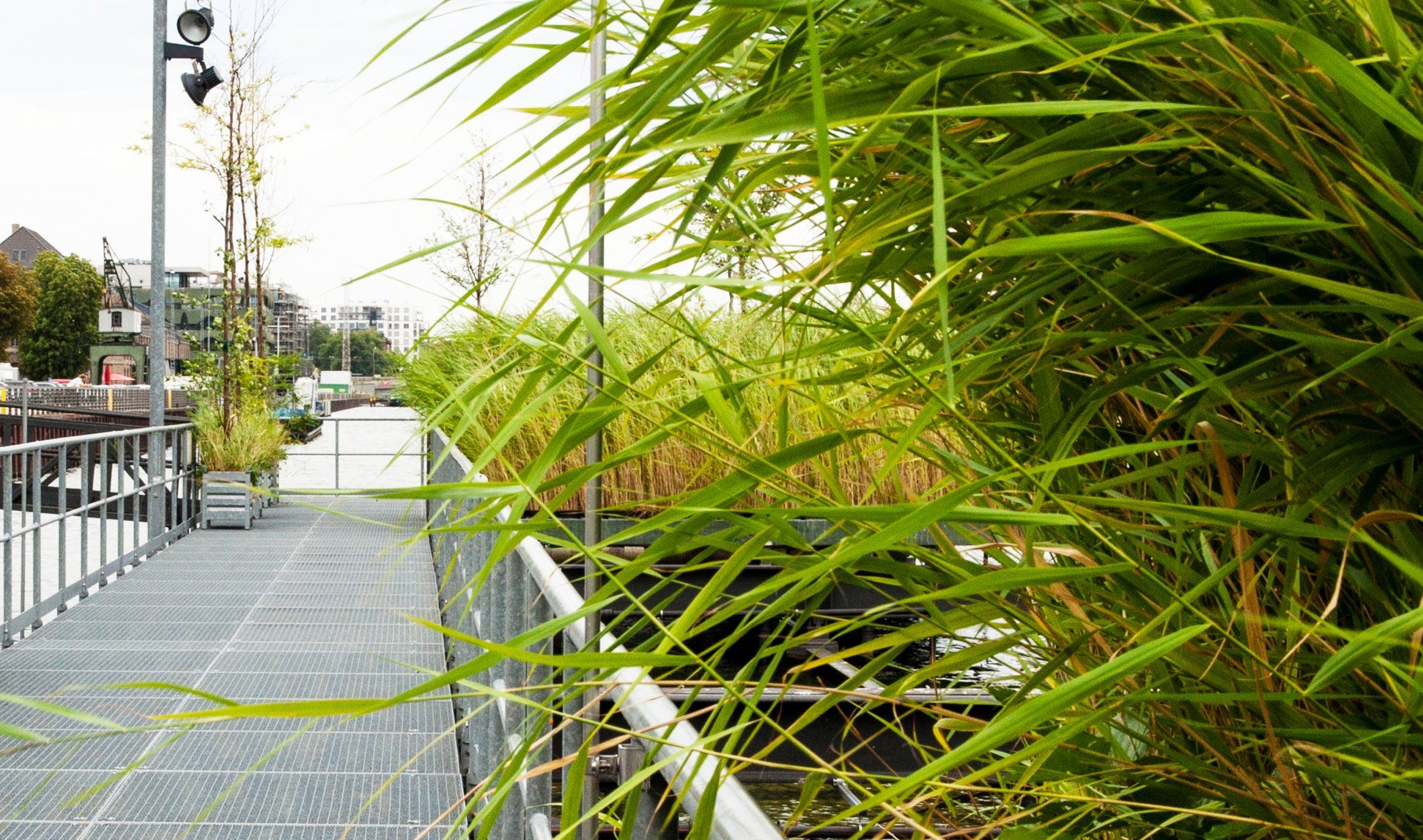
Storm water basins with gardens on the platform.
"The WITE plants are designed for changing water levels, strong currents and ship impact and can be installed in the sea, rivers and lakes."
With WITE plants, the usual ring sewer system on lakes, in which several inlet pipes are connected to each other via a pipe system laid in the ground, can be dispensed with. It's easier: The pipes are extended into the lake and converge at the point where the sewage treatment plant is installed.
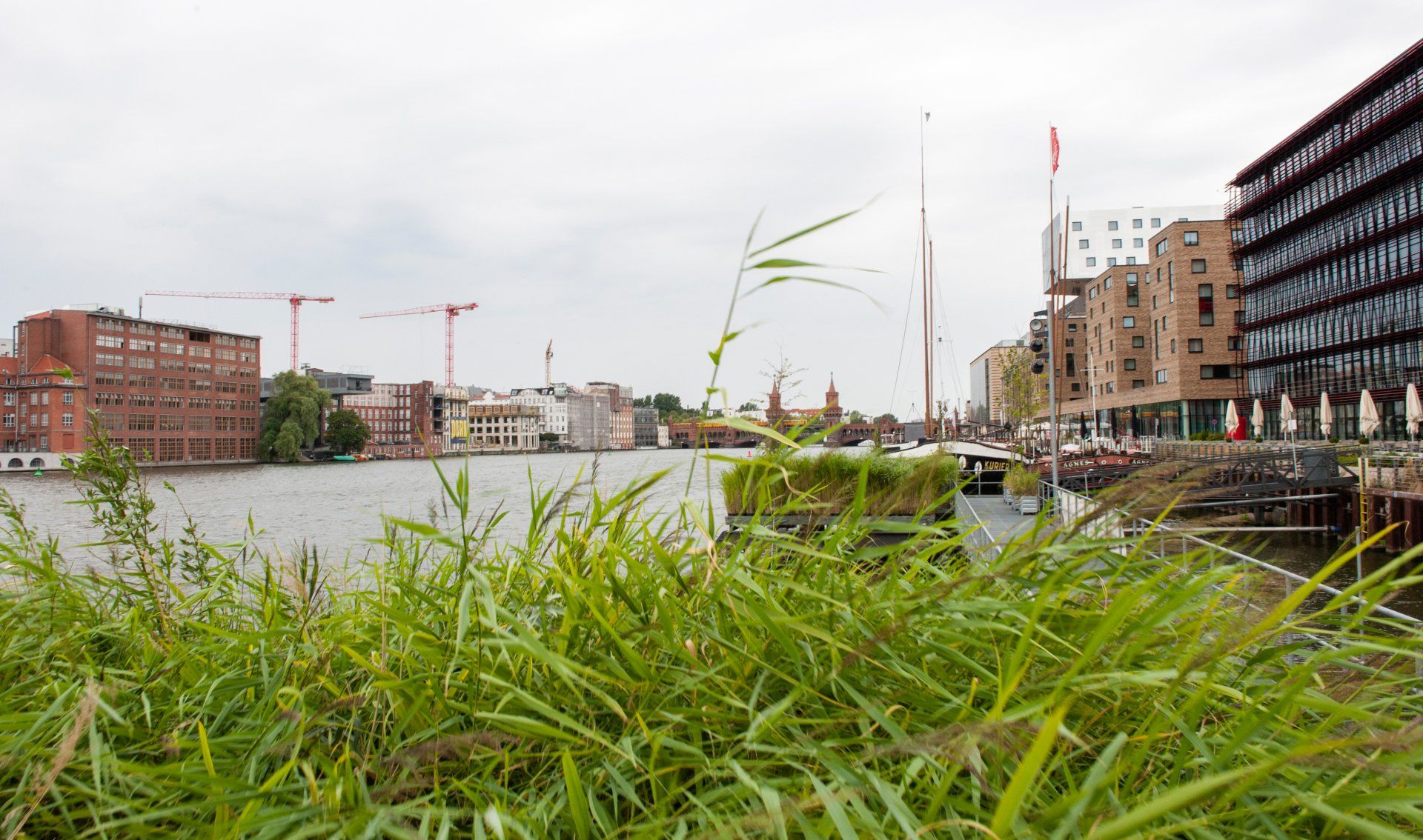
Storm water basin with reed planting.
The encapsulation of the waste water in the pipe system and the associated exhaust air treatment reduce odors to a minimum. And: Even for the discharge of the treated wastewater, no long pipelines have to be planned and built: It is discharged directly into the waters on site.The plants are anchored to the bottom of the water with a deep foundation or mounted on floating pontoons. They are designed for changing water levels, strong currents and ship impact and can be installed in rivers, lakes or the sea.
BUILDING GROUND
Water bodies are usually owned by the state or local authorities. For the WITE facilities, there is no need to purchase land from private owners for pipe routes and the building ground of the facilities, which often precede years of negotiations, approval or even court proceedings.
BUILDING GROUND
Water bodies are usually owned by the state or local authorities. For the WITE facilities, there is no need to purchase land from private owners for pipe routes and the building ground of the facilities, which often precede years of negotiations, approval or even court proceedings.
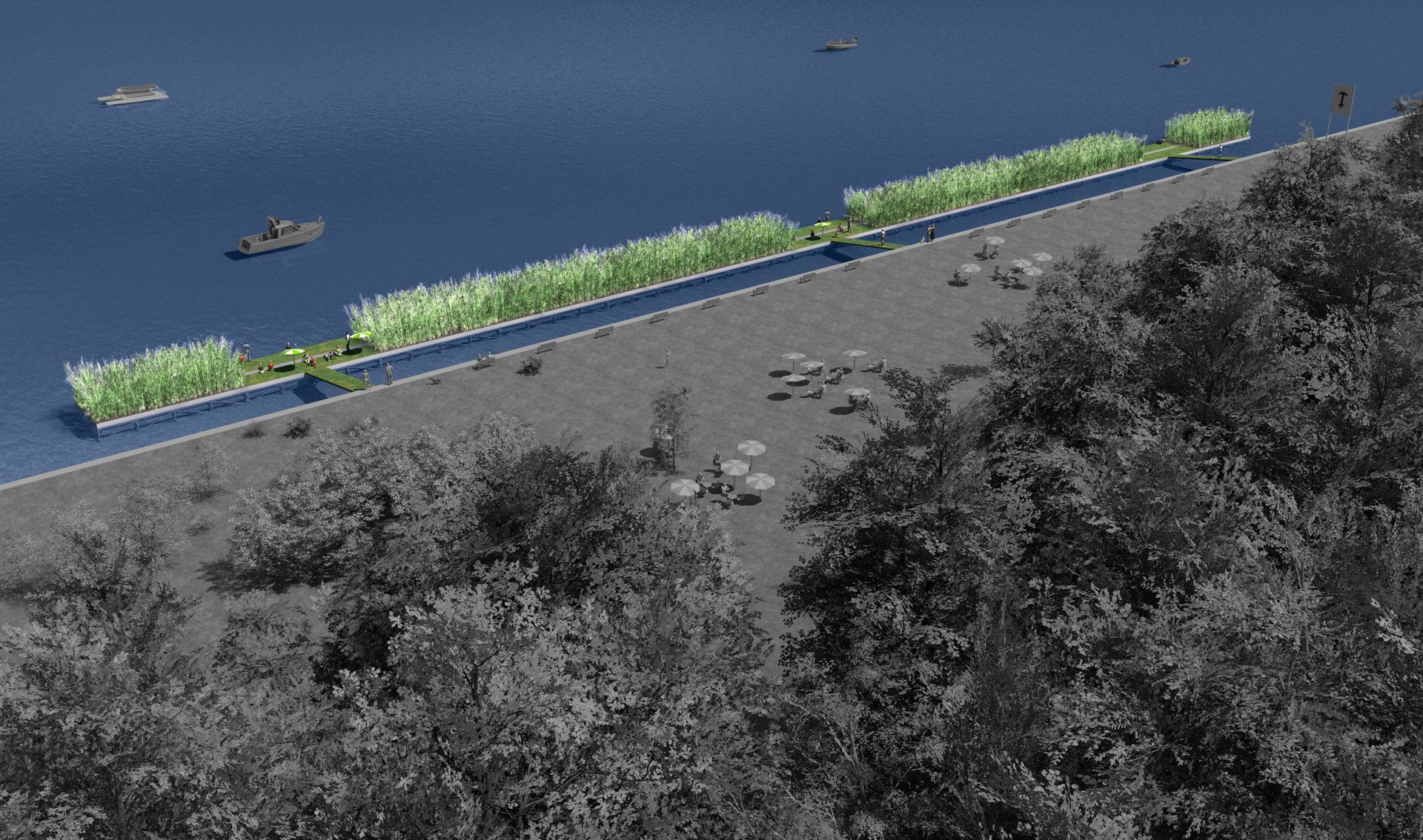
Storm water basins with constructed wetlands and recreational areas for the population.
FINANCING
The use of the surfaces also offers completely new possibilities for financing: the areas can be marketed and thereby generate income for the city or investors.
